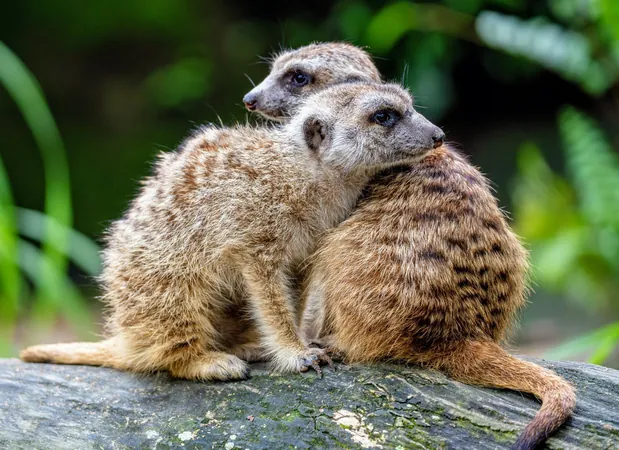
Unlocking the Secrets of Animal Behavior: Surprising Patterns Across the Globe!
2025-05-18
Author: Emma
A Hidden Order in Nature's Chaos
At first glance, the animal kingdom appears to be a whirlpool of chaos—predators hunting, prey fleeing, and herds grazing. However, groundbreaking research reveals that beneath this seemingly chaotic surface lies a hidden order that transcends species and continents.
Animals in Diverse Environments
This eye-opening study monitored animal interactions in three vastly different ecosystems: the arid Kalahari Desert, where meerkats burrow, the lush rainforests of Panama, home to coatis, and the vast savannahs of Kenya frequented by spotted hyenas. Despite their varied lifestyles, the researchers uncovered a fascinating commonality in how these animals transitioned from one behavior to another.
Tracking Movements with Technology
Scientists from the Max Planck Institute of Animal Behavior employed accelerometers—similar to those found in smartphones—to meticulously track these animals’ movements over extended periods. This technology allowed them to gather intricate data on how individual animals shifted through various activities such as foraging, resting, or wandering.
An Astonishing Behavioral Discovery
To everyone’s surprise, a striking pattern emerged: the longer an animal engaged in a particular behavior, the less likely it was to switch to something else. Instead of the expected shift towards other activities the longer they stayed engaged, the animals showed a remarkable commitment to their current task.
The Science Behind Predictive Behavior
Researchers introduced the concept of 'predictivity decay,' revealing that as animals persist in a current activity, it becomes increasingly challenging to predict their next steps due to random influences and external conditions. Remarkably, this predictability demonstrated a consistent pattern across diverse species, hinting at a shared underlying structure.
Explaining the Patterns
Two primary theories emerged to explain these patterns: first, the idea of positive feedback—remaining in a behavior offers comfort, safety, or social reinforcement. Second, animals continuously process various environmental cues related to hunger, danger, and social interactions, all operating on different tempos; their overlapping rhythms might elucidate these behavioral strategies.
Further Exploration Awaits
Numerous questions remain on the horizon. Do these patterns also apply to solitary animals? How do different life stages or stressors affect these behaviors? Might such extended behaviors aid in energy conservation or enhance attentiveness?
A Shared Rhythm in the Animal Kingdom
This innovative research sheds light on the underlying mechanisms that govern animal behavior across species. Ultimately, it suggests that despite the apparent unpredictability of wildlife, a shared rhythm ties together creatures as distinct as hyenas, coatis, and meerkats. This study paves the way for a deeper understanding of the intricate and often hidden forces shaping animal life.
This groundbreaking research was published in the prestigious journal, Proceedings of the National Academy of Sciences.









 Brasil (PT)
Brasil (PT)
 Canada (EN)
Canada (EN)
 Chile (ES)
Chile (ES)
 Česko (CS)
Česko (CS)
 대한민국 (KO)
대한민국 (KO)
 España (ES)
España (ES)
 France (FR)
France (FR)
 Hong Kong (EN)
Hong Kong (EN)
 Italia (IT)
Italia (IT)
 日本 (JA)
日本 (JA)
 Magyarország (HU)
Magyarország (HU)
 Norge (NO)
Norge (NO)
 Polska (PL)
Polska (PL)
 Schweiz (DE)
Schweiz (DE)
 Singapore (EN)
Singapore (EN)
 Sverige (SV)
Sverige (SV)
 Suomi (FI)
Suomi (FI)
 Türkiye (TR)
Türkiye (TR)
 الإمارات العربية المتحدة (AR)
الإمارات العربية المتحدة (AR)